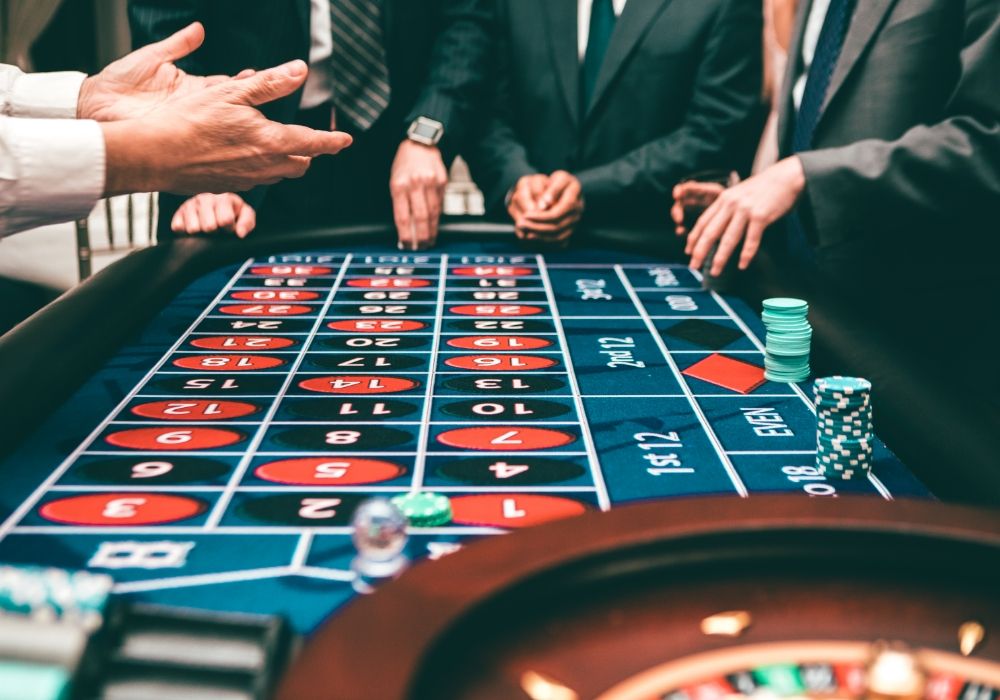When a Bet Says “No”
Most people think gambling is about luck, math, and entertainment. It is also – often invisibly – about dissent. A surprising number of players describe their favorite sessions as moments when they stepped outside the “safe plan,” refused the script of predictability, and wrote a risky line of their own. They didn’t bet to escape responsibility; they bet to escape permission – the endless approvals and “be reasonable”s of modern life. If you’ve ever felt that inward spark – the sense that placing a careful, budgeted wager is your way of saying I’ll choose the uncertain path today – you’ve met gambling’s protest soul. Whether you play private sessions on mobile, live tables for social electricity, or discovered new lobbies through https://casinoly12.gr/, the feeling is the same: for a few minutes, you reject the incremental and embrace the vivid.
This article is written from inside the industry, with unusual candor. We’ll explore the psychology of reactance and autonomy, the economics of precarity that make risk feel rational, the dramaturgy of game design that converts rebellion into rhythms, and the identity work players do when they say “no” to stability – without saying a word. We’ll end with a practical toolkit for keeping protest playful, responsible, and honestly priced.
What Does It Mean to Call Gambling “Protest”?
“Protest” here isn’t necessarily a placard on a boulevard. It’s expressive defiance – a small, personal refusal to let routine have the last word. Players frame it in four ways:
- Against Predictability: Life’s calendar is full of predictable wins (paycheck, commute, chores). Risk reintroduces could and maybe – and with it, oxygen.
- Against Control by Others: Bosses, deadlines, forms. A bet re-centers agency: no approvals, no committee.
- Against Optimization: The culture of “maximize ROI” makes every minute a spreadsheet; gambling reclaims unoptimized joy.
- Against Status Narratives: Some people are told they’re “not the type” to take risks. A bet asserts an alternative self.
In all four, protest is not destruction; it’s recomposition – you assemble a different story about yourself, for an hour.
Reactance: The Psychology of “Don’t Tell Me What to Do”
Psychologists call it reactance: when perceived constraints tighten, the urge to reassert freedom spikes. Casinos – done well – offer a space where the rules are explicit and finite (paytables, RTP, table limits), yet your path inside them is wide-open. No one tells you which game to choose, how long to stay, or when to cash out. For players who feel over-directed in daily life, simply tapping spin can feel like reclaiming the steering wheel.
- Why it comforts: Reactance is satisfied not by chaos but by consequence ownership. You choose, you see. That closure is rare elsewhere.
- Where it misfires: When the urge to “prove autonomy” overrides previously chosen limits. The solution isn’t less freedom; it’s pre-committed boundaries that you authored before emotions peak.
Expressive Utility vs. Expected Value
We all know expected value (EV) – the mathematical average outcome of a bet. But people also play for expressive utility: the value of saying something about who they are. A session can be “worth it” even when EV is negative, if the experience expresses autonomy, courage, curiosity, or playfulness within a budget you can happily afford.
- Rationality, reframed: It’s rational to pay for a concert that reduces savings by €90 because it delivers meaning. Gambling, priced as entertainment purchase rather than investment, can be the same – if you treat it that way.
Precarity: Why Risk Feels Strangely Sensible
We live in a world of flexible gigs, rising costs, and moving goalposts. For some players, stability is already unstable. In that landscape:
- Small, bounded risk can feel more honest than pretending a rigid plan will protect you from everything.
- Upside optionality (the chance – however slim – of a big surprise) is emotionally valuable in a life of slow increments.
- Temporal compression: A 30-minute session offers a complete arc – setup, suspense, resolution – when ordinary life serves cliffhangers without finales.
This isn’t a defense of reckless play; it’s an explanation of why the logic of stability can ring hollow – and why protest through risk can feel coherent.
The Aesthetic of Defiance: Volatility, Color, Sound
Design can honor protest without inflaming it:
- Volatility as a mood: High-volatility slots promise sparse valleys and bright peaks – a rhythm some players choose explicitly for a “make it count” night.
- Color dramaturgy: Warm golds for wins, cooler palettes for resets; restrained near-miss cues keep “almost” in its place.
- Sound & tempo: A good score heightens suspense without coercion; the best designs include natural beats where a player can breathe – and possibly stop.
When interfaces respect agency – clear information, proportional celebration, visible cash-out – protest becomes artful rather than compulsive.
Identity Scripts: The Player You Choose to Be Tonight
Many players pick a persona at session start:
- The Strategist: flat stakes, sharp exits, satisfaction from execution.
- The Explorer: new titles, features unlocked, story over scoreboard.
- The Socialite: live tables, chat, shared rituals.
- The Tourist: soft volatility, 30–45 minutes, a gentle finale.
Protest doesn’t always mean yolo. Sometimes it means refusing the life-script that says you must maximize everything. The Strategist’s protest is to stop precisely when she planned, even if suspense begs for “one more.”
“I’m Not My Day Job”: Gambling as Identity Restoration
Jobs can flatten people into roles. A session lets players rehydrate selves that feel dry:
- The careful accountant taps her adventurer.
- The overexposed manager slips into privacy – no meetings, just choices.
- The caregiver tries self-directed time – no one asking for anything.
When players say a session “reset” them, that’s protest’s happy form: not against others, but for a fuller self.
Why Players Defy “Quit While You’re Ahead”
Ending cleanly is wise. So why do players fear it?
- Anticipation chemistry: Dopamine peaks before the outcome; stopping after a win ends the peak. Continuing restarts it.
- Moving reference points: Hit +€100? The mind silently re-anchors to +€200. Ending feels like “settling.”
- Narrative incompleteness: If the win lands “too early,” the story doesn’t feel finished.
These are predictable forces – not character flaws. Countering them requires pre-declared finales and win rituals that make ending feel like a peak, not a pause.
The Social Dimension: Quiet Rebellion vs. Loud Validation
Protest can be private. Many strong players intentionally keep sessions off-stage:
- They avoid highlight-reel distortion (social feeds show peaks, not variance).
- They protect relationships from money talk that rarely nourishes them.
- They save their attention for the moment, not for performative storytelling.
Silence isn’t secrecy when paired with accurate private records and, ideally, one trusted witness who can ask, “How’s your plan holding up?”
Myth vs. Reality: Five Common Misreadings of “Protest Play”
- Myth: Protest means recklessness.
Reality: It often means reclaiming choice within clear limits. - Myth: Protesters hate stability.
Reality: They hate compulsion; many are meticulous planners who enjoy choosing risk in bounded pockets. - Myth: Design manipulates people into rebellion.
Reality: Good design frames choice and adds breath points. Manipulation flattens difference; artful UX sharpens it. - Myth: Stopping on a win is cowardly.
Reality: It’s the boldest protest against “just one more.” - Myth: Protesters chase losses.
Reality: Chasing is protest’s shadow; healthy protest turns around at the line it drew beforehand.
Case Vignettes (Composite, Realistic)
A. The Weekend Rebel
Elena, 31, teacher. Weekdays are bells and schedules. Saturday night: Explorer mode, 60 minutes, mid-volatility, exit on first feature after minute 40. When it hits, she withdraws, plays one lo-fi track, lights up the room, closes. Her protest isn’t the risk; it’s the ending she chose.
B. The Precision Maverick
Hassan, 43, QA engineer. Strategist persona: unit bets, stake-up friction (counts to five), dual display (credits + EUR). He treats design as a terrain to move through – not a push to obey. His protest is taste: he won’t let color or pace write his story.
C. The Night-Shift Poet
Marina, 36, ICU nurse. After shift she wants a world with no alarms. She caps at 25 minutes, low volatility, blue-toned UIs. Her protest is privacy – no performance, just a small arc that ends cleanly. If she’s tired, she doesn’t play. Her “no” protects future “yes.”
The Operator’s Role: Designing for Agency, Not Compliance
From the inside, the most sustainable relationship with protest-minded players is to trust them:
- Clear Value: Credits and currency side by side; paytables visible; volatility explained in plain language.
- Proportionate Celebration: Reserve deep golds and long animations for real wins; keep micro-wins modest so peaks stay special.
- Natural Intermissions: Gentle prompts after features – “Bank now?” “Breather?” – as invitations, not commands.
- Stake-Up Friction: A dignified, half-second confirmation for increases – especially post-peak.
- Player-Authored Limits: Time or loop-based reality checks in their words (“Explorer mode – remind me at 45m”).
Design that honors no as gracefully as yes converts protest energy into long-term trust.
The Ethics of “Near-Miss”: Keeping Protest Honest
Near-miss is theatre. Ethical palettes and sounds keep it in its lane:
- Cooler, shorter cues for near-misses; warm, longer signals only for wins.
- Micro-pause after a near-miss so the player can breathe – and stop if they wish.
- Language clarity: Tutorials and tooltips that name near-miss as loss, not “almost win.”
Anything less muddies the boundary players need to keep rebellion playful.
Skillful Protest: A Player’s Field Manual
1) One-Sentence Plan
“Tourist mode, 40 minutes, €X entertainment, exit on +€Y or first feature after minute 30.”
Pre-author your finale so emotion doesn’t write it.
2) Pick a Persona
Strategist / Explorer / Socialite / Tourist. Check behavior every 10–15 minutes. Identity-aligned play lands deeper – and ends cleaner.
3) Dual Display
Show credits and currency. Ownership rises; house-money illusions shrink.
4) Stake-Up Breath
Count 4 in, 6 out before any stake increase. If you still want it after the exhale, it’s likely a choice – not a reflex.
5) Win Ritual (10 Seconds)
Mute → breathe → screenshot → bank a portion → whisper a closing line (“That’s mine”). Ritual turns math into memory.
6) Event-Linked Exit
Tie exits to events you can’t negotiate with yourself: first feature after minute X, second clear peak, or two near-misses post-win.
7) Night-Mode Rules
Shorter sessions after 22:00, lower volatility, no back-to-back. Fatigue hides edges; edges protect art.
8) Weekly Three-Number Audit
Hours, net, largest drawdown. If drawdown exceeds comfort, scale stakes down 25% next week. Protest that respects tomorrow.
Micro-Experiments (Try One Tonight)
- Grayscale Check (2 minutes): Toggle device to grayscale. If urge drops, color was doing heavy lifting; pick calmer palettes next session.
- Near-Miss Naming (10 times): Say “loss” aloud after every near-miss. Watch urges convert into choices.
- Two-Peak Pattern: End on the second strong peak. Stopping will feel like completing a design, not cutting one short.
- Screenshot Ledger: Each exit gets a shot and a ten-word note. Your future self becomes a better storyteller – and judge.
Why Stability Fans Misread Protest
Well-meaning friends ask: “Why risk it at all?” Three responses, without defensiveness:
- Because I price it as art, not income. I buy a story tonight; EV is the ticket price.
- Because I play within self-authored edges. My “no” is as strong as my “go.”
- Because I end well. I don’t chase a better ending; I design one.
If any of those stop being true, pause. Protest without edges becomes weather, not choice.
The Future of Protest Play: Personalization, Transparency, Choice
- Personalized Pacing: AI can adapt speed and prompts to your persona – Explorer nights get discovery cues, Strategist nights get crisp exits.
- Richer Ledgers: Session diaries that pair numbers with mood tags (“calm,” “rushed,” “curious”).
- Community Norms: Streamers modeling clean endings and honest net summaries – turning exits into applause moments.
- Regulatory Clarity: Tools that make limits player-owned, not imposed – respect fosters responsibility.
The most sustainable future is not less risk; it’s clearer risk – and more beautiful endings.
Frequently Asked Questions
Isn’t calling gambling “protest” just romanticizing risk?
It’s describing a real motive many players report. Naming it helps build better boundaries around it.
Can protest play ever be “optimal”?
Optimal at what? If the goal is expressive utility within budgeted loss tolerance, yes – when played inside pre-committed limits and clean exits.
How do I know if my protest is drifting?
Red flags: hiding sessions, improvising endings every time, borrowing to play, stake creep after fatigue. If any show up, take a formal break and reset limits.
Will rules ruin the thrill?
They refine it. Edges make colors brighter; finales make stories stick.
Responsible Play, Always
Gambling is entertainment. If you notice secrecy, chasing, missed obligations, or borrowing to fund play, step back. Use time-outs, lower limits, or seek professional support in your region. The only risk worth taking is the one you chose – with the end already written.
Conclusion – The Courage to Choose an Ending
Gambling as protest isn’t a tantrum against logic; it’s a declaration of authorship in a life crowded by systems. The strongest players don’t burn their plans – they write them. They know why they play (expression, not extraction), how they’ll play (persona, pace), and when it ends (an event they chose, not a feeling that moves the goalposts).
Defying stability can be beautiful when it is bounded, conscious, and honest. Pick your role for the night. Price the story before it starts. Breathe on the hinge moments. Celebrate the exit – not as surrender, but as the most radical line of the evening: I decide the ending. And then let the curtain fall, not on chaos, but on a protest so precise it looks like grace.








